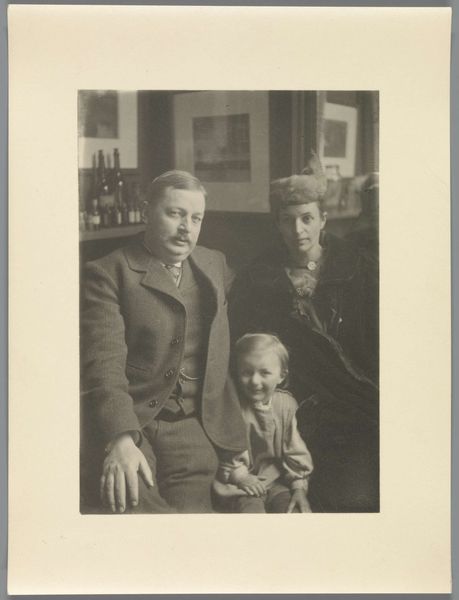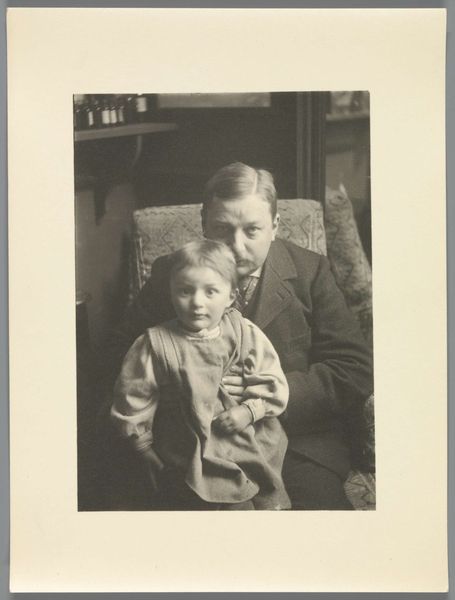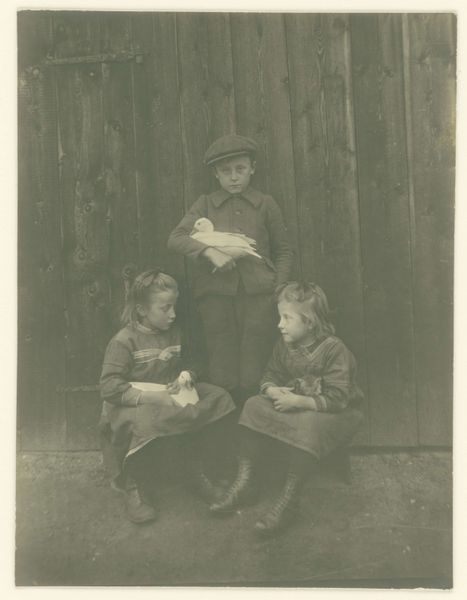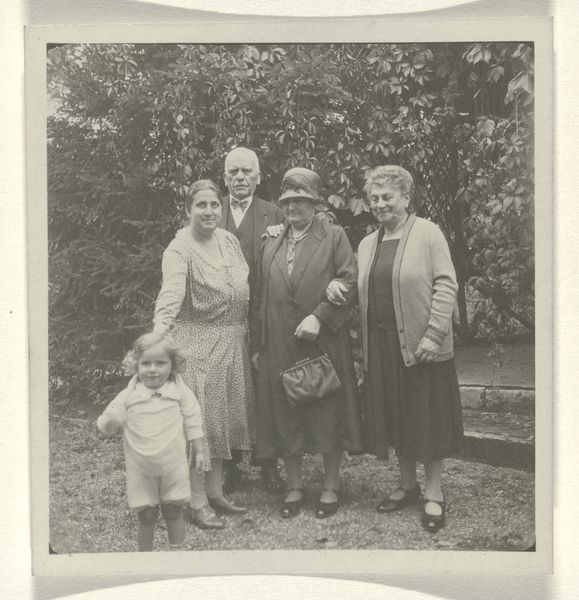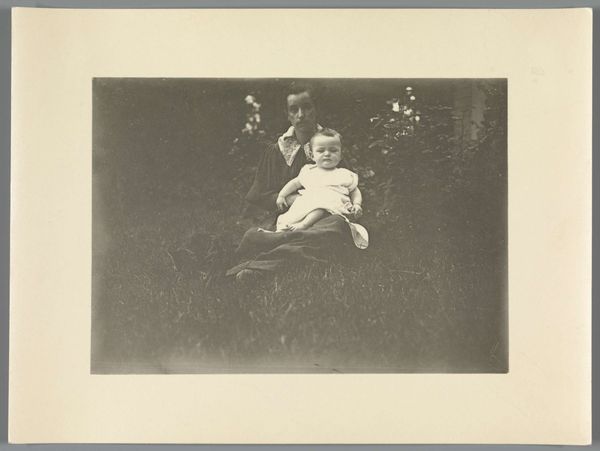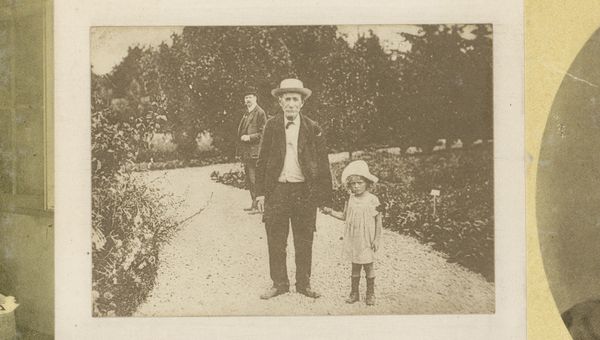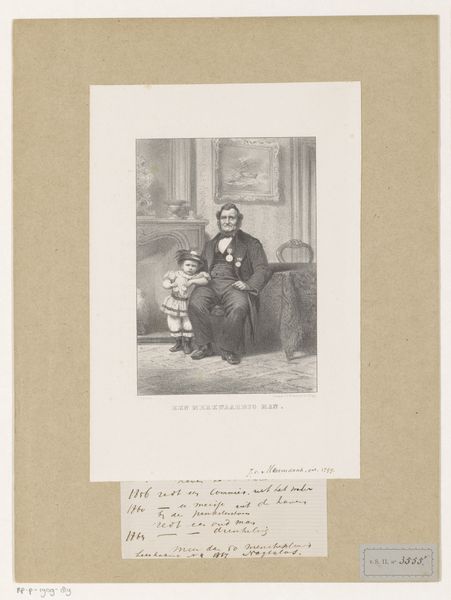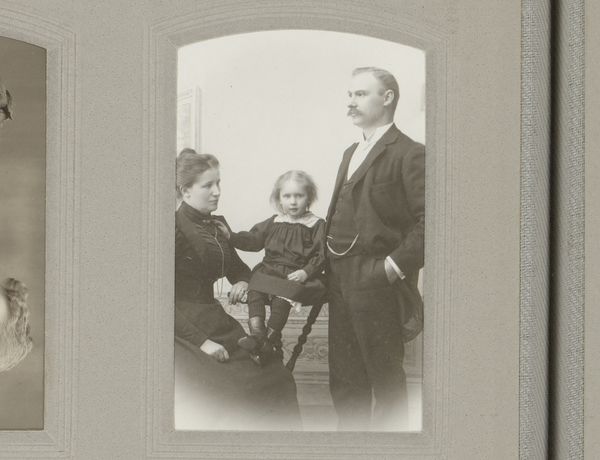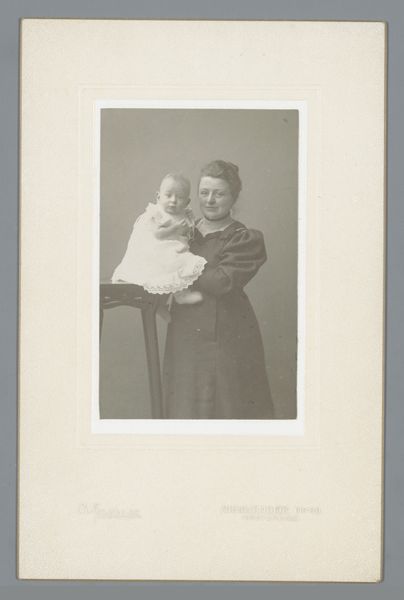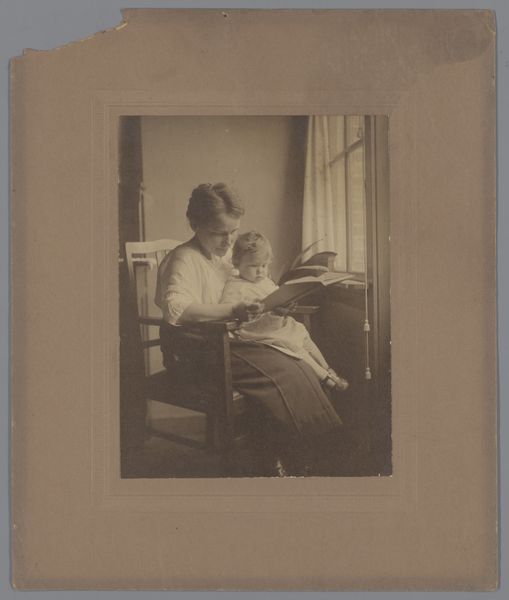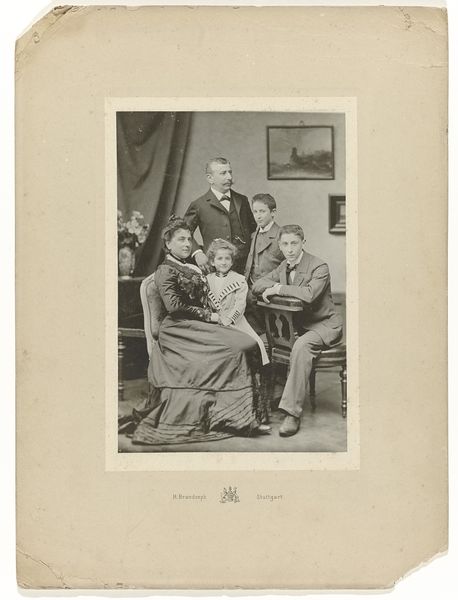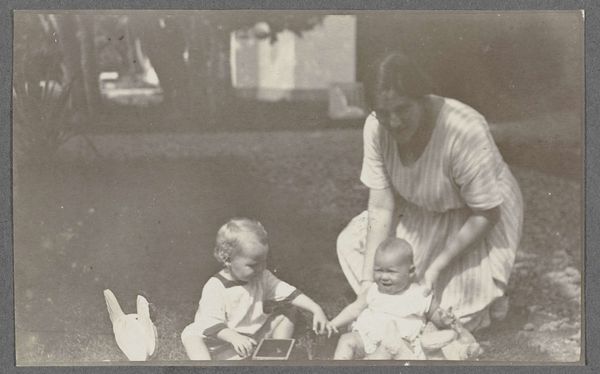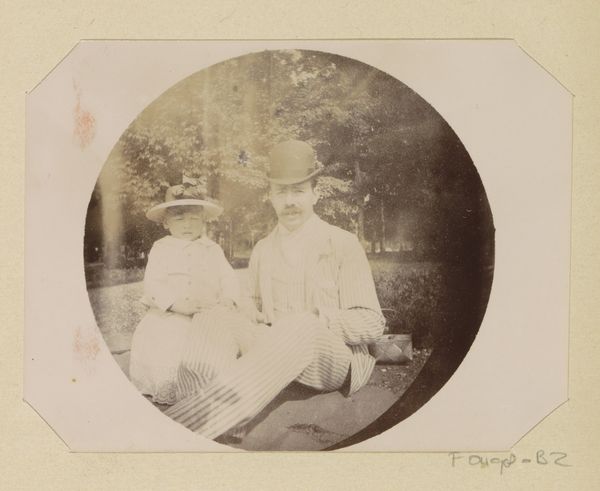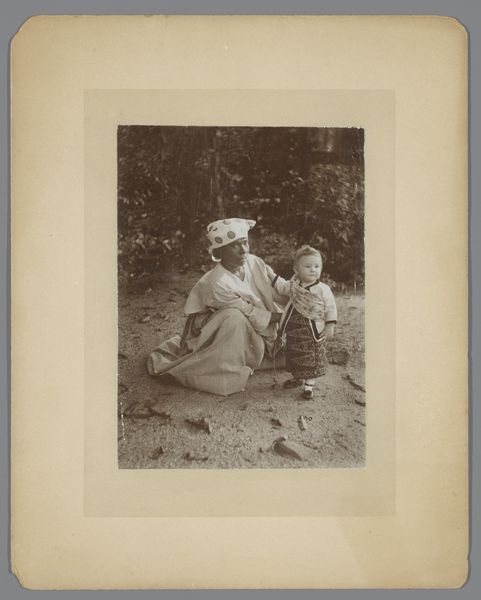
photography, gelatin-silver-print
#
portrait
#
pictorialism
#
landscape
#
photography
#
gelatin-silver-print
Dimensions: height 231 mm, width 174 mm, height 168 mm, width 119 mm
Copyright: Rijks Museum: Open Domain
Editor: Here we have a gelatin-silver print, a photographic reproduction of Willem Witsen made sometime between 1860 and 1915, currently held at the Rijksmuseum. The blurry quality and focus on the figures in the center makes the portrait feel quite intimate. What strikes you most about it? Curator: I’m drawn to the materiality of the gelatin-silver print itself. Consider how the artist, or the technician who created the reproduction, manipulated the chemical process to achieve that soft, almost painterly effect. What does that blurring of the line between photography and painting tell us about the status of photography as an art form during this period? Was it trying to emulate established art forms? Editor: That's a great point, it definitely seems to be reaching for the aesthetic qualities we'd expect from painting. But how does that impact our understanding of photography as a tool of documentation, when it's so heavily manipulated? Curator: Precisely. This pictorialist approach raises questions about authenticity and artistic labor. Look at the clothing the subjects are wearing. What can we infer about their social standing, the textiles used, and even the labor involved in producing those garments? Editor: So you're suggesting the photograph, and the materials used in its creation, gives us insights into the society that produced it? The clothes, the photographic techniques, they're all part of this material network. Curator: Exactly! We see not just an image, but a complex web of social and economic relations encoded within the gelatin-silver print itself. How different would our understanding be if this was, say, a quick snapshot from a much later period? Editor: This has completely changed the way I see this photograph! I thought it was just a nice portrait, but it’s really a record of production, labor, and cultural aspiration. Thanks for pointing out the clues hidden in the materials themselves. Curator: My pleasure. Remembering to analyze not just the "what" but the "how" and "why" something was made is crucial for a deeper appreciation.
Comments
No comments
Be the first to comment and join the conversation on the ultimate creative platform.
